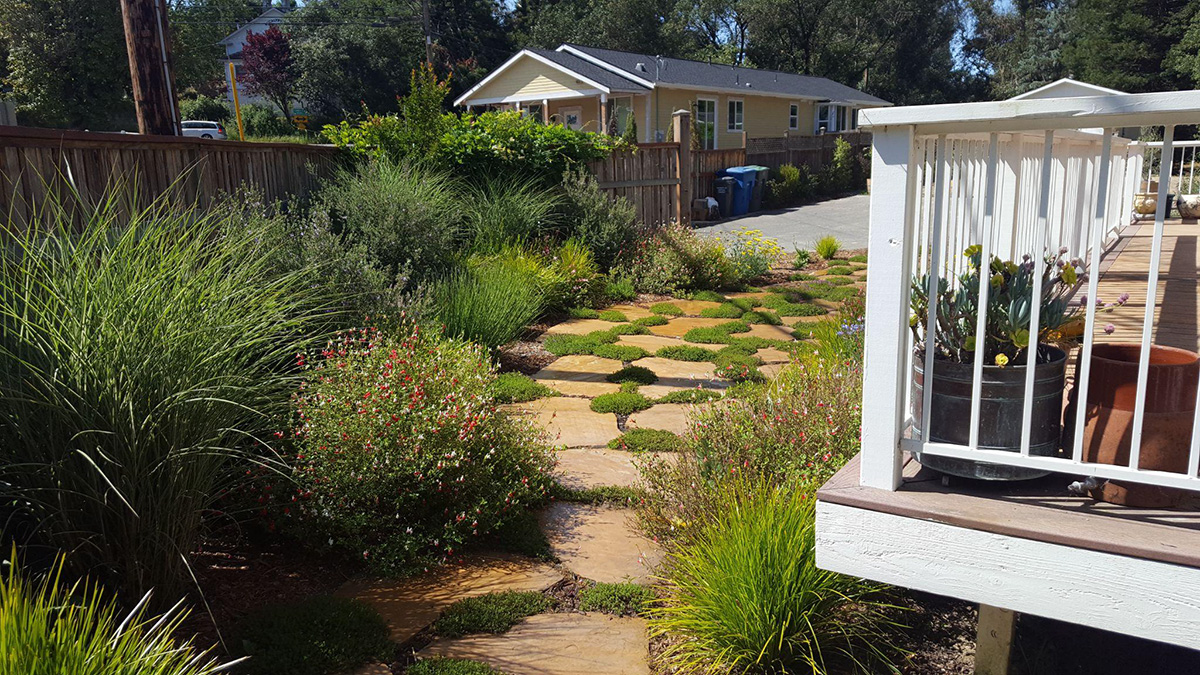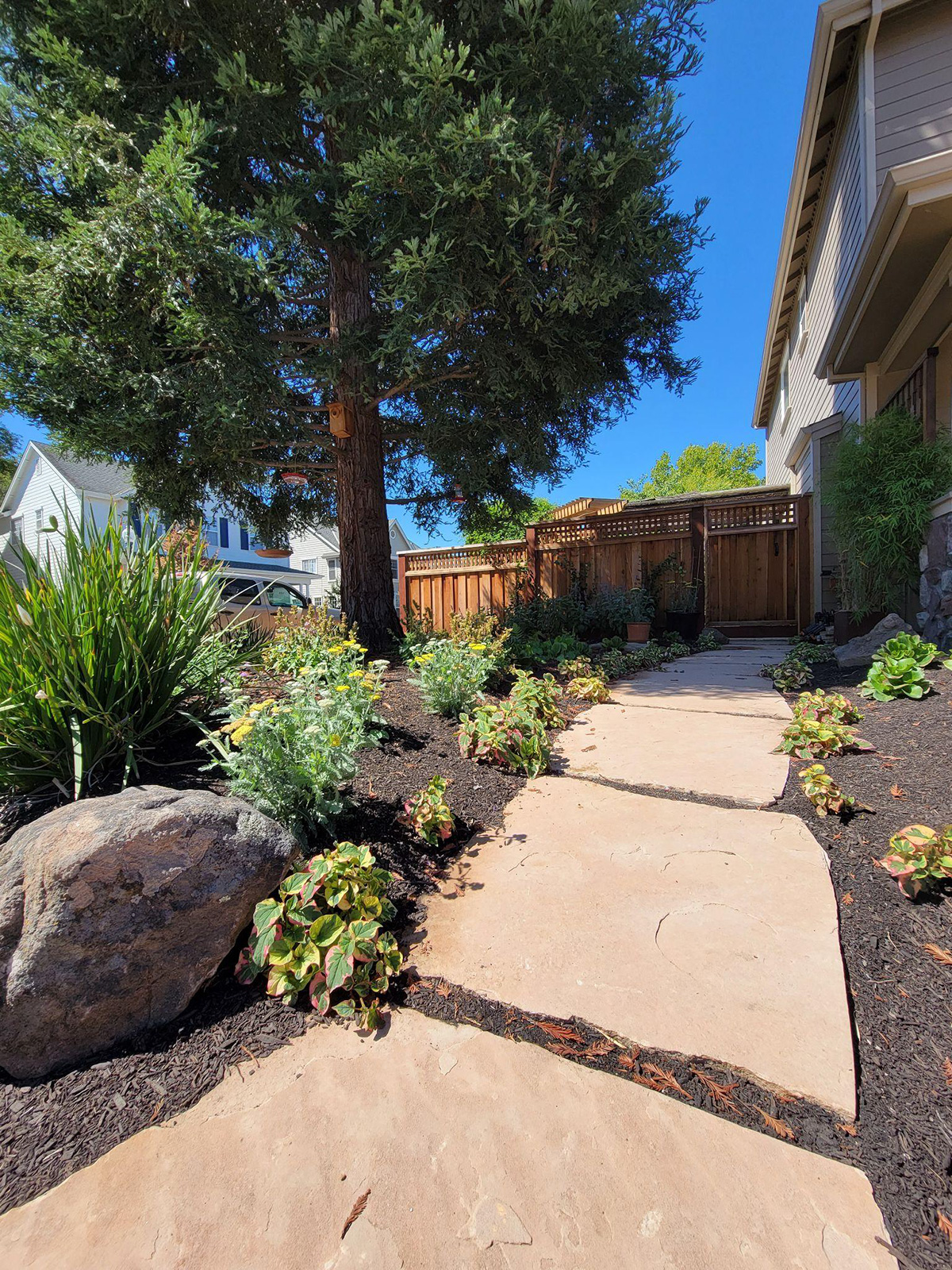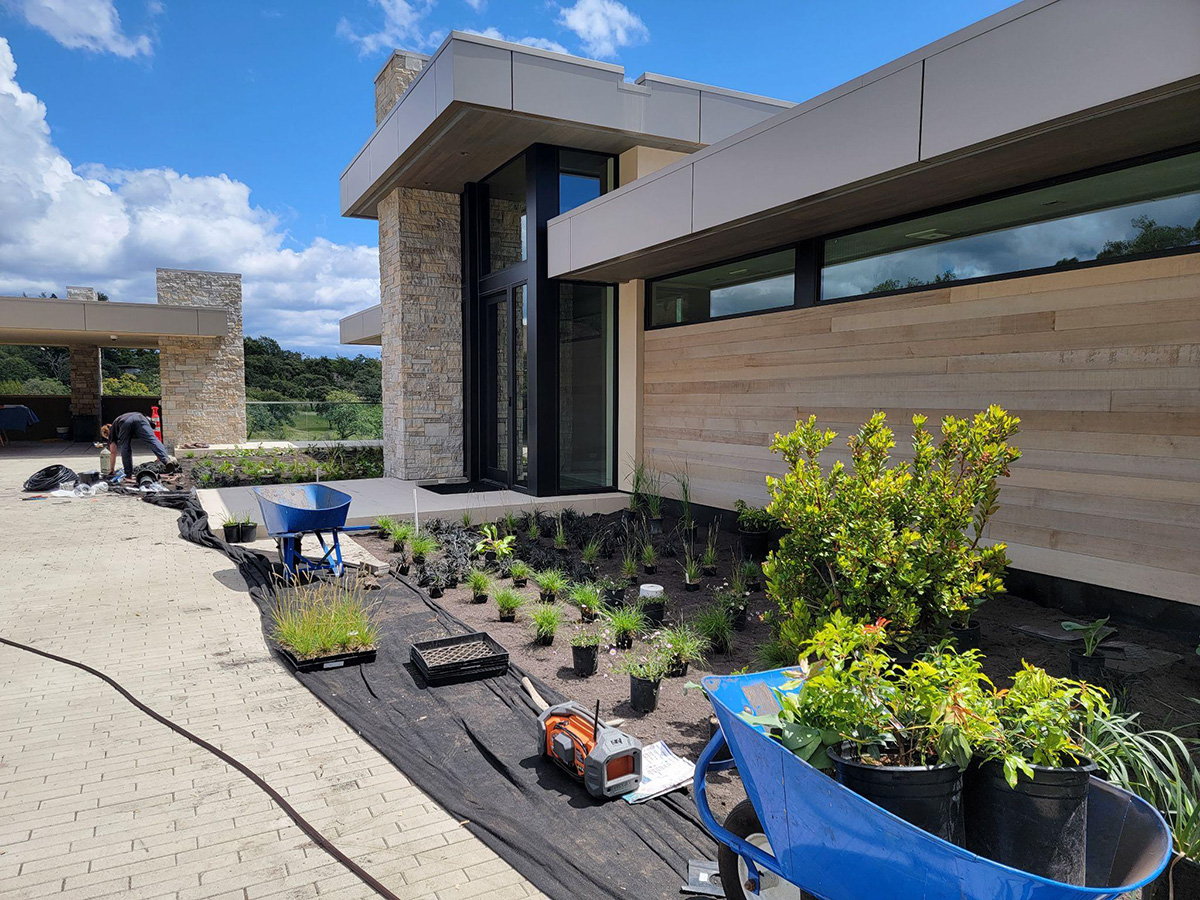
5 Tips to Build a Cost – Effective Landscape
A landscape design can take many shapes and forms, from elaborate patio spaces with water features and pergolas to simple yet elegant planting spaces to soften up an area of your property. The costs associated with the choices you make vary dramatically and often clients of ours find it surprising when realizing where and how money can be saved within their project. If you’re unsure of what to avoid, or how to get the most out of your money, check out these 5 tips from our expert team of designers and estimators.
If you’re looking for landscapers near me in Sonoma County then reach out to our team at Inspired Landscapes. Our expert team is on hand to help you build your dream landscape on your unique budget.
1 – Patio and Pathway Surfaces Matter!
There are a staggering amount of possibilities for what material is the finished surface of your patio or pathway. While natural stone surfaces such as travertine, flagstone, or bluestone are stunning, they also come with a significant material and labor cost burden compared to other options. We generally rank this as the ‘highest’ end, especially natural stone that is cut into specific shapes as the supplier still charges you for the wasted parts in their cost per square foot of materials.
A great alternative that still allows for a smooth, stable, and durable surface is precast concrete pavers. They come in a wide range of textures, shapes, colors, and sizes allowing for many aesthetic directions from old-world cobble to modern contemporary angles. Many mimic the color and texture of natural stone quite convincingly and come in well below half the cost per square foot, sometimes as low as 25% of the cost of natural stone.
Compacted aggregate materials such as decomposed granite or decorative crushed rock are also fantastic options for patio surfaces and can be quite beautiful. However, their disadvantage is they are more susceptible to erosion or wear and tear from heavy use requiring touch-ups or repair. Regardless, they are significantly cheaper than other options with decomposed granite coming in at about 50% of the cost of concrete pavers, and decorative crushed rock closer to 40% the cost of concrete pavers.

2 – Planting Container Sizes
Most clients assume that planting bigger sizes is better because they will have healthy mature plants from the start. It turns out this isn’t always true, while we agree that planting larger-sized trees is advantageous, we recommend installing most plants in the smallest container size available with the exception of some particularly slow-growing shrubs.
Plants that arrive in large containers have been living in a pot for a long period of time which stresses out the plant and stunts its growth due to its roots being bound inside the pot. Plants in smaller containers rapidly spread new deep roots and almost always end up growing much faster than plants installed in larger container sizes and end up being much healthier!
It might be counterintuitive, but installing plants in smaller containers and as a result, spending less on both plant materials and labor to install them, often leads to a more vibrant landscape in a shorter period of time compared to installing larger container sizes.
3 – Irrigation Controller
Irrigation controllers in particular come packed with wifi and weather sensing technology that might provide incredible value for someone with 6+ irrigation zones, but for a small backyard that might be overkill and a more simple and straightforward irrigation controller is a better option. Ensuring your estimator selects a controller that is the correct fit for your site is also key, we often see properties with 4 irrigation zones but have a commercial-grade controller built for 48 zones. This is an obvious example of overbuilding that can necessarily cost a client thousands of dollars in equipment and installation costs.
4 – Drip Irrigation
Old school thought on irrigation was that everything needed an overhead sprinkler, but nowadays unless it’s a lawn, almost everything should be irrigated with drip irrigation. Yet many contractors still insist on installing sprinklers. This not only leads to tremendous water waste but also less healthy plants and a much higher cost for installation. Sprinklers require underground trenching, PVC piping, and a relatively advanced knowledge of how to place and space them correctly to ensure proper coverage. Rarely are sprinkler layouts perfect not only does it cost more to install, but you’ll pay more in the long run replacing dead and stressed-out plants.

5 – Mulch Materials
Mulch can mean a wide range of materials including wood, stone, rubber, and in some cases even glass. Mulch is essentially any material that is left to cover the soil to suppress weeds, retain moisture, add aesthetic value, and in some cases nourish the soil and plants. As there are so many options, there are many cost variables. Crushed rock can be a very expensive mulch because it’s harder to move and spread rock but also the material itself can cost 5x or even 10x what a compost or recycled bark mulch could cost. Even within the bark mulch options cost varies dramatically with decorative fir bark costing up to 4x what a recycled bark might cost. Sometimes you can even find free compost or recycled wood bark mulch from local arborists or composting centers that can be used in your landscape.
Mulch makes a huge impact on the final aesthetic of a landscape, so in some areas, it makes sense to go for the nicer options. Yet sometimes compost or wood mulch will actually do favors for the health of the landscape and your budget as both serve to feed the soil and plants as they break down.
As with all parts of landscaping, there are so many choices to be made! We know that can feel overwhelming so don’t hesitate to reach out to us for a consultation where we can analyze your project, your goals, and your budget, and provide examples of materials and clear projections of costs to install them on your property. We are experts at designing both extravagant, and cost-effective landscapes, and love the unique challenges every project brings to our team!

Owner, Inspired Landscapes LLC
Matthew Ripley is the owner of Inspired Landscapes LLC, a Healdsburg based landscape design, installation, maintenance, and irrigation firm serving Sonoma County. His work blends horticultural expertise with sustainable practices, drawing creative influence from Sierra backpacking and Sonoma winery estates to craft gardens that invite wildlife and year round color. Client testimonials highlight his design leadership on residential, estate, and winery properties across the region.





